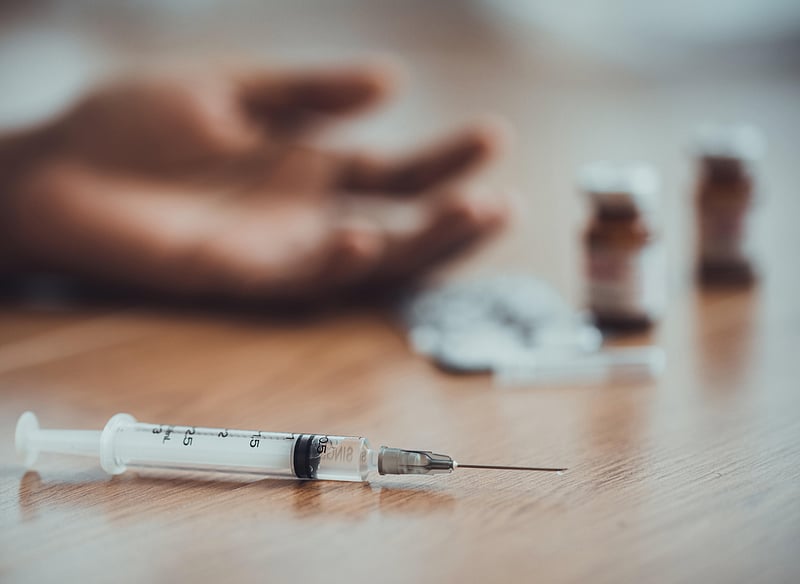Get Healthy!

- Ernie Mundell
- Posted December 14, 2021
U.S. Fentanyl Deaths Soaring, Especially in West
Synthetic forms of the potentially lethal opioid fentanyl are flooding the illicit drug market, leaving a soaring number of fatal overdoses in their wake, a new U.S. report finds.
The latest data from the U.S. Centers for Disease Control and Prevention finds that between May 2020 and April 2021, nearly two-thirds (64%) of the more 100,000 drug overdose deaths in the country were tied to illicitly manufactured fentanyl or its chemical cousins.
The trend began months before that, however: New data released Tuesday by the CDC found rising rates of fentanyl-linked fatal overdoses across the nation between 2019 and 2020.
These deaths "increased sharply in Midwestern states (33.1%), Southern (64.7%) and Western (93.9%) jurisdictions," according to a CDC report summarizing data from July 2019 through December of 2020.
Fentanyl is extremely potent and kills quickly. In fact, more than 56% of people who died from fatal overdoses involving the drug "had no pulse when first responders arrived" on the scene, said a team of researchers led by Julie O'Donnell. She's with the Division of Overdose Prevention at the CDC's National Center for Injury Prevention and Control.
One expert was struck by that statistic.
"Given that over half of the decedents were reported to have no pulse upon arrival by medical responders, it is important to improve time to response in reported emergencies with these agents," said Dr. Scott Krakower, a child and adolescent psychiatrist at Zucker Hillside Hospital in Glen Oaks, N.Y., who specializes in treating substance abuse among teens.
Looking at the demographics of who is dying, the study found that men made up the bulk of these tragedies (73%). Many overdoses are killing the young: About 1 in 5 fentanyl-related deaths in the West now involve males under 25 years of age, according to the data.
Fatal overdoses most often involved injection drug use, although in Western states "evidence of snorting, smoking or ingestion, but not injection, was reported in 57.1% of deaths," O'Donnell's team noted.
These fatalities are moving beyond the abuse of opioids: According to the CDC stats, 4 in every 10 fentanyl-linked deaths now involve a stimulant drug, such as cocaine or methamphetamine.
"With a large number of cases coexisting with stimulant and other substance use, better education to the public about the dangers of mixing these agents would be recommended," Krakower said. "Improved access to substance use and dual diagnosis programs would enable to the population to receive treatment. Education to providers, family members, and the general public about naloxone rescue kits [where to locate and access them] would also be helpful."
The plague of fentanyl deaths only seems to have "accelerated during the COVID-19 pandemic," the study authors stressed. Only in the Northeast has there been any sign of "plateauing," they said.
According to O'Donnell's team, synthetic fentanyl was "introduced primarily as adulterants in or replacements for white powder heroin," but then encroached into illicit markets once dominated by heroin.
More recently, fentanyl has been "pressed into counterfeit pills resembling oxycodone, alprazolam [Xanax], or other prescription drugs, and are expanding into new markets, including the Western United States," O'Donnell's group said.
Efforts toward overdose prevention are urgently needed, the researchers said.
On Dec. 1, America's first "overdose prevention centers" opened in New York City, in the Manhattan neighborhoods of East Harlem and Washington Heights. City officials said that at these centers, people will be able to bring their drugs and use them under the supervision of trained staff members who will provide clean needles, prevent overdoses and offer connections to addiction services to those who are interested.
It's a model that has worked to curb drug overdose tragedies in other countries.
"The national overdose epidemic is a five-alarm fire in public health, and we have to tackle this crisis concurrently with our COVID fight,"New York City Health Commissioner Dr. Dave Chokshi said in a statement. "Giving people a safe, supportive space will save lives and bring people in from the streets, improving life for everyone involved. Overdose prevention centers are a key part of broader harm reduction."
The new report was published Dec. 14 in the CDC journal Morbidity and Mortality Weekly Report.
More information:
There's more on preventing opioid overdoses at the U.S. Department of Veterans Affairs.
SOURCES: Scott Krakower, DO, child and adolescent psychiatrist, Zucker Hillside Hospital, Glen Oaks, N.Y.; Office of the Mayor/NYC, news release, Nov. 30, 2021; Morbidity and Mortality Weekly Report, Dec. 14, 2021







